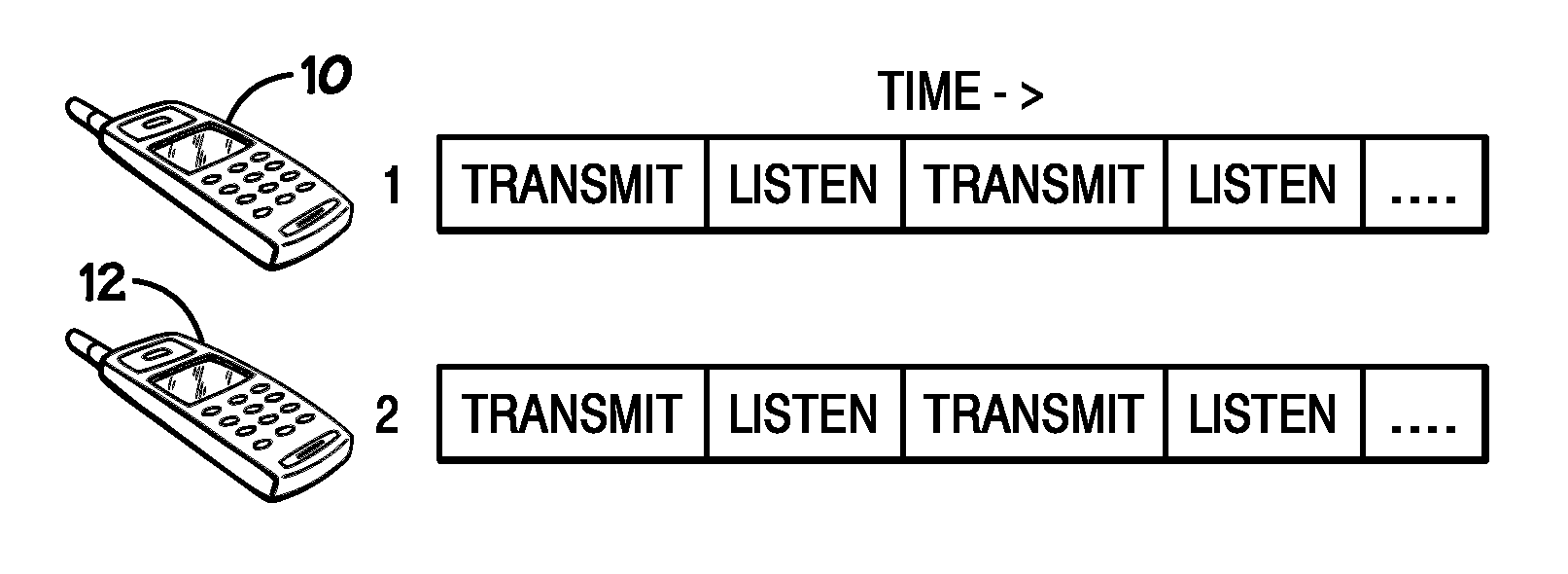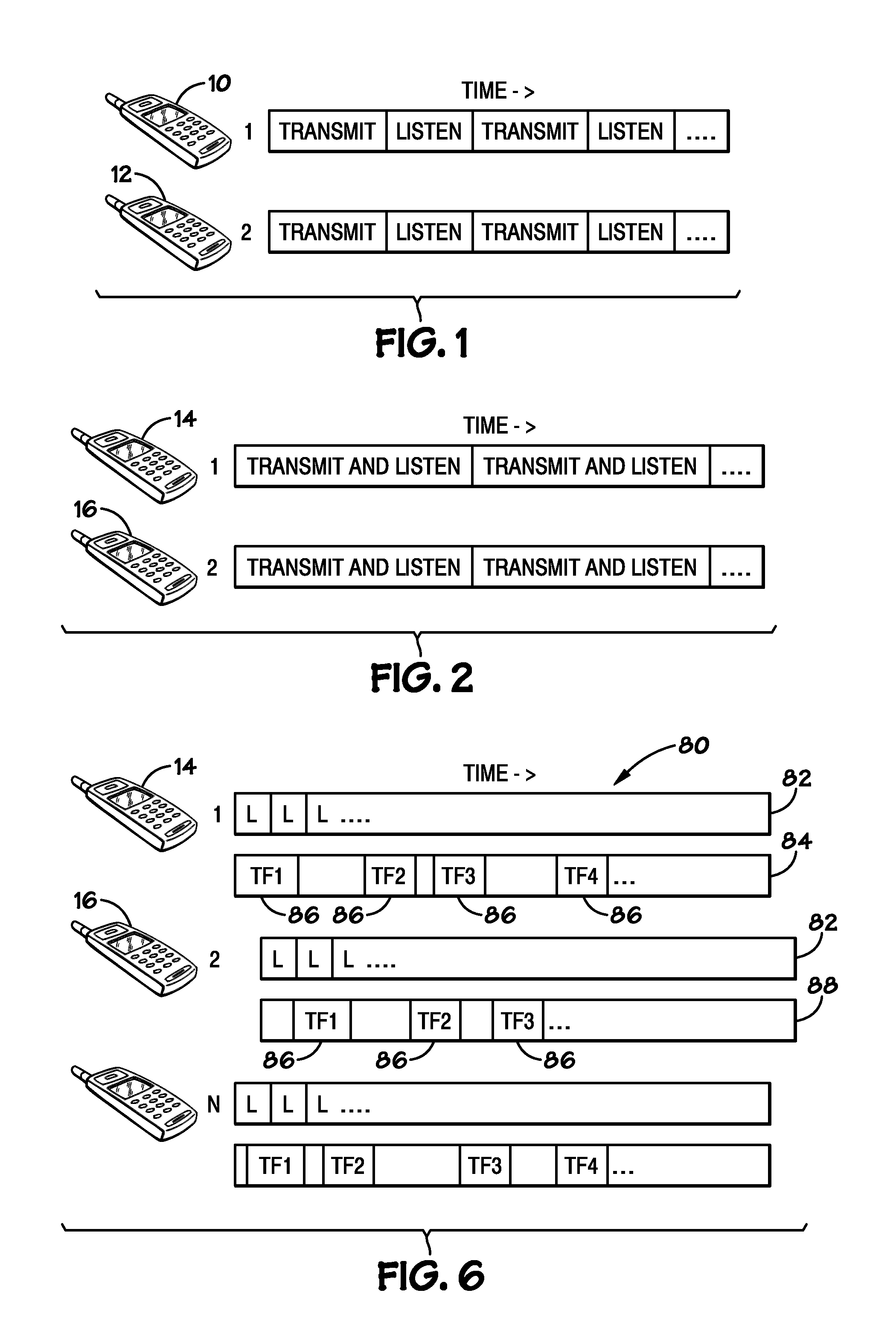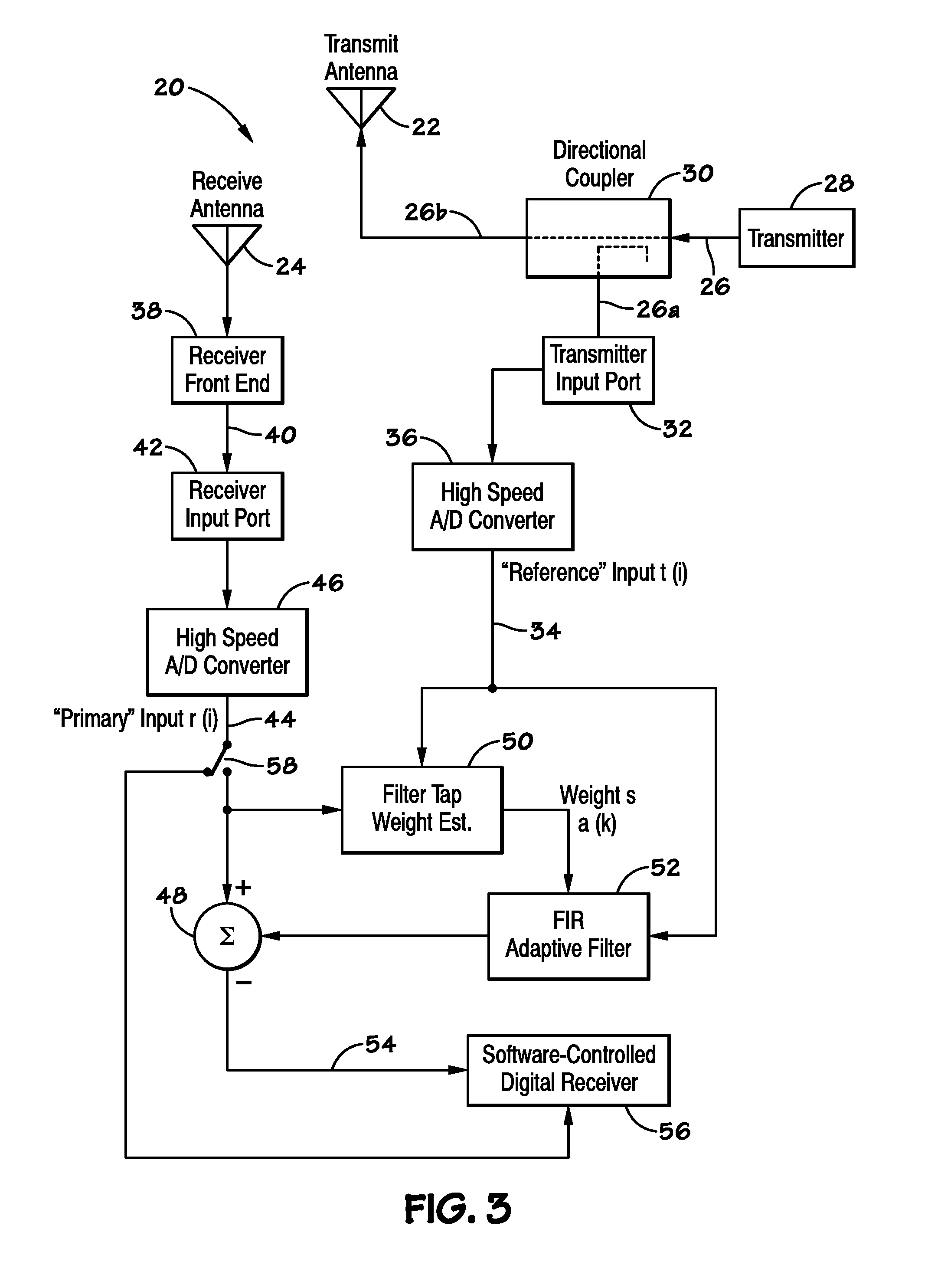Generalized division free duplexing techniques for decreasing rendevous time
- Summary
- Abstract
- Description
- Claims
- Application Information
AI Technical Summary
Benefits of technology
Problems solved by technology
Method used
Image
Examples
Embodiment Construction
[0017]The blind rendezvous problem may refer to delays associated with establishing a rendezvous between two devices, and may result from delays in meeting two rendezvous requirements. First, to establish a rendezvous in typical network configurations, a first device must communicate with a second device (e.g., by transmitting and / or receiving signals) over the same frequency (e.g., channel). Further, the first device typically must be transmitting over the channel while the second device is receiving those transmissions (e.g., listening) on the same channel, or vice versa. Thus, for a communication to occur, the first and second devices must rendezvous, or find a common channel over which signals may be transmitted by one device is received by another device.
[0018]Typically, a beaconing approach may be used to rendezvous between two devices wishing to communicate. Beaconing may refer to the periodic transmission of signals over a sequence of one or more channels and may be used to ...
PUM
 Login to View More
Login to View More Abstract
Description
Claims
Application Information
 Login to View More
Login to View More - R&D
- Intellectual Property
- Life Sciences
- Materials
- Tech Scout
- Unparalleled Data Quality
- Higher Quality Content
- 60% Fewer Hallucinations
Browse by: Latest US Patents, China's latest patents, Technical Efficacy Thesaurus, Application Domain, Technology Topic, Popular Technical Reports.
© 2025 PatSnap. All rights reserved.Legal|Privacy policy|Modern Slavery Act Transparency Statement|Sitemap|About US| Contact US: help@patsnap.com



